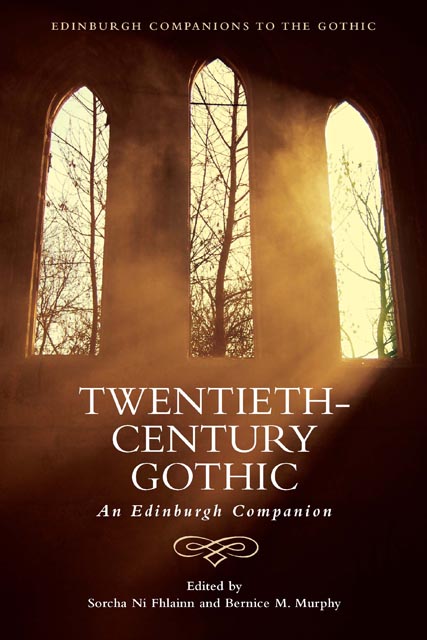4 - Gothic Criticism in the Twentieth Century: Who is This Who is Coming?
Published online by Cambridge University Press: 18 November 2022
Summary
Throughout the twentieth century, Gothic criticism returned constantly to questions concerning the history, characteristics and purpose of the form: what are its typical features; what effects does it seek to produce; is it conservative or radical; is it a thing of the past, or is it still a thing of the present? This chapter charts the development of Gothic criticism across nine decades, assessing the answers it proposed to these questions and dwelling on some landmarks along the way. To dramatise these recurrent preoccupations of the Gothic, let us first turn to a fictional moment that summons a terror from the past. In M. R. James's ‘Oh, Whistle, and I’ll Come to You, My Lad’ (1903), on a seaside holiday the curious scholar Parkins unearths an enigmatic whistle in a ruined Templar preceptory. Walking back to his lodgings along the beach, a site of residual patterns and unpredictable change, Parkins notices an ‘indistinct personage’ that leaves him uncomfortable on ‘that lonely shore’, although his encounter with this stranger is yet to come. After translating an inscription on the whistle as ‘Who is this who is coming?’, Parkins blows it and calls up unexpected company. The whistle reaches across time and space: its soft note possesses ‘a quality of infinite distance’ and conjures ‘a vision of a wide, dark expanse at night’. The spirit that subsequently manifests in Parkins's bedroom is speechless and assumes only ‘a horrible, an intensely horrible, face of crumpled linen’, but it produces a sense of claustrophobic intimacy and presentness. James's wraith, signifying nothing and arriving as much from the future as from the remote past, figures the type of Gothic terror traced by this essay. Since generic definitions loom large in accounts of the Gothic – an attempt to homogenise, make homely the countenance and habits of this strange, often unsettling form – it might be worth observing that James deplored the ‘weltering and wallowing’ excesses of the Gothic, preferring instead ‘a modicum of blood, shed with deliberation and carefully husbanded’. Nonetheless, the mixture of anticipation and dread, excitement and unease in his tale encapsulates the recurrent preoccupations of Gothic criticism in the twentieth century: whether the literature of terror speaks to the present, whether it wears a companionable, even familiar face, and whether it is fascinated, or unnerved, by the terror that awaits.
- Type
- Chapter
- Information
- Twentieth-Century GothicAn Edinburgh Companion, pp. 64 - 80Publisher: Edinburgh University PressPrint publication year: 2022

